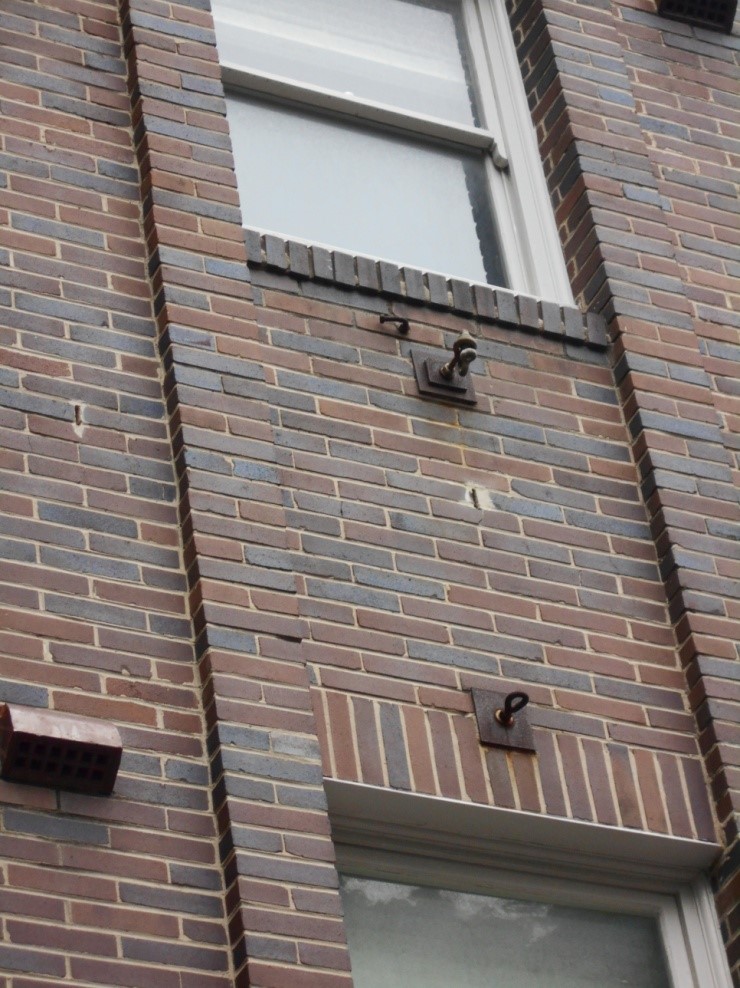BOLTS FROM THE PAST

High on the liver-coloured brick wall on the Werrington apartments, on the corner of Macleay and Manning Streets on the western side of Macleay Street, are some rusty bolts, metal hooks and eyelets.
Their apparent uses, at first glance, seem redundant and unknown.
However, these inconspicuous, enigmatic objects were once a pivotal part of Potts Point.
These are the metal hook-lines and bolts that suspended electric wires above Macleay Street. They fed power to electric trolley bus number one, our prime mode of public transport. It travelled to and from the city terminating at Wylde street, originally a dead end, from 1934 until 1941, and then returning.
Previously, trams trundled up and down Bayswater Road and William Street to and from the CBD until 1960 as well as electric trolley buses in Macleay and Wylde Streets, which ran until 1948. Sydney once had the second largest tram network in the world after London and three times that of Melbourne, with over 300km of suburban tracks. Trams travelled on viaducts, through rock cuttings, across the Sydney Harbour Bridge and in tunnels.
In 1890, 29 horse-drawn buses made 630 round trips per day up and down William Street carrying over 8,000 people a day and then in 1894 cable tram services also negotiated the steep grade. This was upgraded to an electric tram system from 1898-1905. In the 1890s Sydney’s first government-operated steam bus route was trialed from Potts Point to Darlinghurst. Although the steam bus failed, private motor buses began to compete with the trams after the end of World War I in 1918.
By the 1930s the service through Kings Cross was the busiest on the Sydney system: trams ran one minute apart during weekdays. People came to Kings Cross for lunch from the CBD. Trams were joined by Sydney’s first electric trolley bus service in 1934 from CBD to Potts Point. By the mid-1930s, trams, trolley buses, cars, taxis and government buses all operated along congested William Street and through the Cross. It was Sydney’s worst bottleneck.
Trolley buses used electricity connected by a cobweb of overhead wires strung up along six metre poles with insulated covers and / or bolts connected to nearby buildings, such as those on the Werrington building.
Trolley bus number one, two-toned in green and cream with its grey roof, gold lettering and brown, leather-covered, rubber seats for 34 passengers, still exits. It is conserved in Sydney’s Power House Museum.
Unlike trams, it ran on rubber tyres and was therefore quieter, was not confined to tracks and moved from lane to lane in traffic, picking up passengers from the kerb rather than the middle of the road like trams. For some, they were too quiet and caused accidents as they crept up on unwary passengers and pedestrians.
Fares varied from two to four pence for adults and a penny for children.
It was anticipated they would replace trams but the Potts Point trolley bus service suffered from de-wiring problems and a lack of spare parts. Although nearly a million passengers a year were being carried on the line, after 1945 they still couldn’t meet passenger demand. During road repairs in 1948 they were replaced by diesel buses and then quietly disappeared.
Trams still ran but pressure to close them increased. Despite protests, the last tram ran quietly through Kings Cross in the early morning of Sunday 10th July 1960 and into history.
Only these rusty eyelets and bolts remain as urban archaeology from our trolley bus history.
By Andrew Woodhouse, Heritage Solutions





